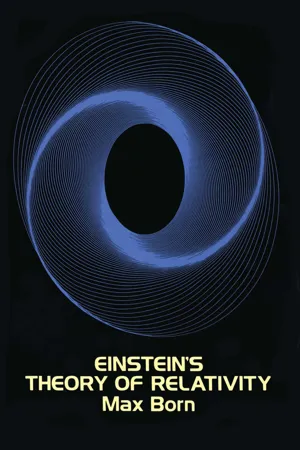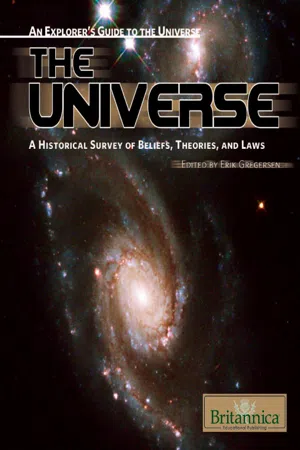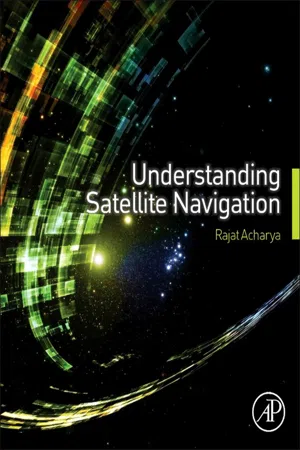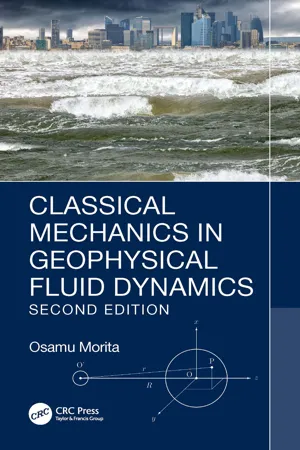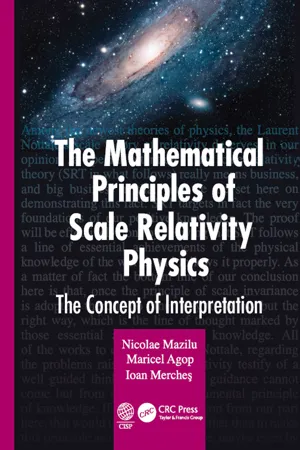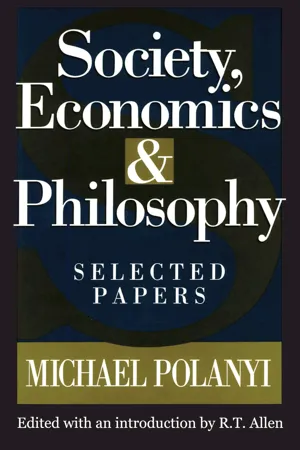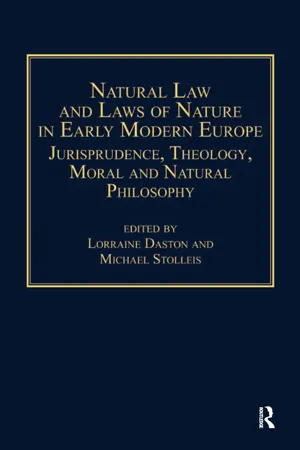Physics
Third Law of Kepler
The Third Law of Kepler states that the square of the orbital period of a planet is directly proportional to the cube of the semi-major axis of its orbit. In simpler terms, it describes the relationship between a planet's distance from the sun and the time it takes to complete one orbit. This law is fundamental in understanding the motion of celestial bodies within our solar system.
Written by Perlego with AI-assistance
Related key terms
Related key terms
1 of 4
Related key terms
1 of 3
10 Key excerpts on "Third Law of Kepler"
- eBook - ePub
- Jayant V. Narlikar(Author)
- 2012(Publication Date)
- Dover Publications(Publisher)
h /2. We therefore getThe major axis of the ellipse isKepler’s third law states that T 2 /a 3 is constant. HenceDenoting this constant by 1/K , we getThis is the inverse square law! We note that the acceleration of P1 and hence the force on P1 varies inversely as the square of the distance from S. The minus sign in fr means that the force is directed towards S.Newton in fact first solved the problems of motion with the techniques of calculus and later gave geometrical proofs for the convenience of those of his colleagues who might be unfamiliar with calculus and hence suspect the validity of the results!We now apply Newton’s second law of motion to the result that a planet of mass m P has an acceleration towards the Sun with a magnitude given by the inverse square law:Here λ is a constant and the factor r 2 in the denominator shows that the acceleration falls away as the inverse square of the distance r of the planet from the Sun. The second law of motion then gives the force on the planet towards the Sun asKepler’s third law of motion further tells us that the constant λ is the same for all planets. The result derived in Box 2.2 relates λ to the ratio a3 : T2 which is known to be the same for all orbits:Thus a typical planetary orbit is characterized by the constant a (equal to half the major axis of the ellipse) and the orbital period T . As we move outwards from the Sun, we encounter planetary orbits of increasing a and T. However, for all these orbits the above formula gives the same value of λ .Can we say something more about λ ? We can, provided we take into account Newton’s third - eBook - ePub
Circles and the Cross
Cosmos, Consciousness, Christ, and the Human Place in Creation
- Loren Wilkinson(Author)
- 2023(Publication Date)
- Cascade Books(Publisher)
nature of creation.Arthur Koestler provides a helpful statement of Kepler’s laws in The Sleepwalkers , which is a superb study of the history of astronomy:1 ) that the planets travel round the sun not in circles but in elliptical orbits, one focus of the ellipse being occupied by the sun;2 ) that a planet moves in its orbit not at uniform speed but in such a manner that a line drawn from the planet to the sun always sweeps over equal areas in equal times;3 ) that the squares of the periods of revolution of any two planets are as the cubes of their mean distances from the sun.140From this concise summary, we can make three important observations about these laws. First, they can each be stated with remarkable brevity. These are not skeletal summaries of the laws, which require further elaboration, but are the laws themselves. The planet earth is a vast and complicated object, and even a partial description of any part could be an endless task, and so it is both wonderful and unsettling that its movement can be described with such reductive elegance.Second, each law is stated precisely in mathematical rather than empirical terms. Thus we do not need anything beyond the nonphysical world of pure thought to understand it. The first law, for example, is the simplest to state and visualize (though it took Kepler eight years to discover). Yet this first law is revolutionary in its recognition that the movements of the planets are not in the “perfect” form of the circle. Because the circle is the most symmetrical of geometric figures—each point on the circumference being equidistant from its center—it was considered by Plato, Aristotle, and medieval Christians to describe naturally the only sort of motion that could exist in the perfect heavens. (The heavens were defined as anything beyond the orbit of the moon.) So it seemed obvious to all thinkers before Kepler that a perfect God would create his cosmos to move in perfect circles. No sense-investigation of the real world was appealed to in order to establish this “fact.” (Indeed, any appearances to the contrary, like the troubling retrograde movements of the planets, were “saved” by an increasingly elaborate framework of “epicycles”: conceptual circles turning within circles.) The fact that the planetary orbits could only be described mathematically by the geometric figure of the ellipse was bad news to Kepler, who was as committed as any other medieval thinker to the idea that the heavens should be mathematically perfect. So he was not pleased to destroy the illusion of perfect celestial symmetry; he said of his first law, that even though he had swept the heavens, all he had was “only a single cart-full of dung” (the slightly elliptical orbit of Mars).141 - eBook - ePub
- Max Born(Author)
- 2012(Publication Date)
- Dover Publications(Publisher)
Philosophiae Naturalis Principia Mathematica, however, Newton refrained from using these new methods and represented the matter in the guise of the customary classical geometrical methods.We follow Newton’s method but restrict ourselves to a simple example in order to illustrate his general results.The orbits of the planets are ellipses of slight eccentricity—that is, almost circular. It is permissible to assume that the planets describe approximate circles about the sun, as was, indeed, supposed by Copernicus. Since a circle is a special kind of ellipse, this assumption certainly fulfills Kepler’s first law.The second law now implies that every planet traverses its circle with constant speed. We already know (II , 4 ) all about the acceleration in such circular motions. It is directed towards the center and, by (formula 4 ), has the valuewhere v is the speed in the orbit, and r is the radius of the circle.If now T is the period of revolution, the velocity is determined as the ratio of the circumference to the time T, thusso thatWe next consider the third Kepler law which, in the case of a circular orbit, clearly states that the ratio of the cube of the radius, r3 , to the square of the time of revolution, T2 , has the same value C for all planets:If we insert this in the value for b above, we getHence the value of the centripetal acceleration depends only on the distance of the planet from the sun, being inversely proportional to the square of the distance, but it is quite independent of the properties of the planet, such as its mass. For the quantity C - eBook - ePub
The Universe
A Historical Survey of Beliefs, Theories, and Laws
- Britannica Educational Publishing, Erik Gregersen(Authors)
- 2009(Publication Date)
- Britannica Educational Publishing(Publisher)
was an exact quantitative description of the motions of visible bodies. It rested on Newton’s three laws of motion: (1) that a body remains in its state of rest unless it is compelled to change that state by a force impressed on it, (2) that the change of motion (the change of velocity times the mass of the body) is proportional to the force impressed, and (3) that to every action there is an equal and opposite reaction. The analysis of circular motion in terms of these laws yielded a formula of the quantitative measure, in terms of a body’s velocity and mass, of the centripetal force necessary to divert a body from its rectilinear path into a given circle. When Newton substituted this formula into Kepler’s third law, he found that the centripetal force holding the planets in their given orbits about the Sun must decrease with the square of the planets’ distances from the Sun. Because the satellites of Jupiter also obey Kepler’s third law, an inverse square centripetal force must also attract them to the centre of their orbits. Newton was able to show that a similar relation holds between Earth and its Moon. Newton concluded that one and the same force, governed by a single quantitative law, is operative in all three cases. From the correlation of the Moon’s orbit with the measured acceleration of gravity on the surface of Earth, he applied the ancient Latin wordgravitas(literally, “heaviness” or “weight”) to it. The law of universal gravitation, which he also confirmed from such further phenomena as the tides and the orbits of comets, states that every particle of matter in the universe attracts every other particle with a force that is proportional to the product of their masses and inversely proportional to the square of the distance between their centres.When the Royal Society received the completed manuscript of Book I in 1686, Hooke raised the cry of plagiarism, a charge that cannot be sustained in any meaningful sense. On the other hand, Newton’s response to it reveals much about him. Hooke would have been satisfied with a generous acknowledgment. It would have been a graceful gesture to a sick man already well into his decline, and it would have cost Newton nothing. Newton, instead, went through his manuscript and eliminated nearly every reference to Hooke.TRACKING COMETS AND STARSContinuing his pioneering work in observational astronomy, in 1705 Halley published A Synopsis of the Astronomy of Comets, - eBook - ePub
- Rajat Acharya(Author)
- 2014(Publication Date)
- Academic Press(Publisher)
1.3 , we learned that to define the position of a point, all we need is a predefined reference and the distances of the point from this reference along three definite axes. In a satellite navigation system, the position is described with respect to the geocentric reference frame, and the satellites act as the secondary reference points defined therein. Thus, to fix the position of any point in a designated coordinate system, the position of the satellites in that frame and the radial distances of the point from these satellites are needed. Therefore, these two parameters are extremely important and need to be readily available for the purpose of user positioning.To know the position of the satellites, one must understand the dynamics of the satellites in orbit, and for that, it is necessary to know Kepler's laws. Johannes Kepler (1546–1630) was a German mathematician who examined observations about the planets moving around the sun, made by his predecessor, Tycho Brahe (1546–1601), and formulated simple but useful laws. These laws are equally true for satellites moving around the earth or for any other celestial bodies. Kepler's laws state that (Feynman et al. 1992 ):1. Every planet revolves around the sun in an elliptical orbit with the sun at one of its foci. 2. A line joining a planet and the sun sweeps out equal areas in equal intervals of time. 3. The square of the orbital period of a planet is directly proportional to the cube of the semi-major axis of its orbit. Why are these laws valid for any two celestial bodies? It is because these laws are basically derivatives of the fundamental gravitational laws, which are universal.Our objective is not to prove Kepler's laws. Rather, we shall see how, by using these laws, we can conveniently find the position of the satellites. For this, we require some elementary knowledge of geometry, and will need to recall the law of gravitation.3.1.1. Ellipse
We start with the geometry of ellipse, which, according to Kepler's first law, is the shape of the orbit. An ellipse is a variation of a circle in which the radii along two orthogonal directions are different. Thus, it is like a circle compressed along one direction, as in Figure 3.1 . The greatest diameter, A1 A2 ,is called the major axis, whereas the shortest diameter, B1 B2 , is called the minor axis. These two axes normally intersect at the center of the ellipse, O. There are two points, F1 and F2 , equidistant from the center on the major axis, called the focus of the ellipse. Their significance follows from the standard definition of the ellipse, which states that an ellipse is formed by the locus of a point that maintains a constant sum of distance from two fixed points on the major axis. These two fixed points are the foci, F1 and F2 . A simpler way to say the same thing is that if you take any point on an ellipse and find that the sum of its distances from the two foci is C, for any other point on the ellipse, the sum will also be C. Therefore, referring to Figure 3.1 , F1 P1 + P1 F2 = F1 P2 + P2 F2 . The greatest radius, OA1 = OA2 = “a,” is called the semi-major axis, whereas the shortest radius, OB1 = OB2 = - Osamu Morita(Author)
- 2022(Publication Date)
- CRC Press(Publisher)
when ε = 1, and an ellipse when ε < 1. Planetary orbits should remain a finite range so that ε must be smaller than unity and then planetary orbits must be ellipses. Thus Kepler's first law is proved. Measuring θ from the line segment F 1 A ¯, namely, putting θ 0 = 0, (11.48) becomes r = η 1 + ε cos θ. (11.50) We will consider an elliptic orbit shown in Fig. 11.11. Let's take the origin as O, the semimajor axis as the x -axis, a focus and the position of the Sun as F 1, another focus as F 2, the intersections of the ellipse and the x -axis as A and B, the intersections of the ellipse and the y -axis as C and D and the position of a planet as P(r, θ). Letting the semimajor axis be a and the semiminor axis be b, we find from (11.50) F 1 A ¯ = η 1 + ε, F 1 B ¯ = η 1 − ε, AB ¯ = 2 a = η 1 + ε + η 1 − ε = 2 η 1 − ε 2, a = η 1 − ε 2. (11.51) When the planet comes to. C, OF 1 ¯ = − r cos θ = OA ¯ − F 1 A ¯ = a − η 1 + ε = η 1 − ε 2 − η 1 + ε = ε η 1 − ε 2, − r cos θ = ε η 1 − ε 2. (11.52) From (11.50) and (11.52), we. get F 1 C ¯ = r = η − r ε cos θ = η + ε 2 η 1 − ε 2 = η 1 − ε 2, b 2 = OC ¯ 2 = F 1 C ¯ 2 − OF 1 ¯ 2 = η 2 1 − ε 2, b = η 1 − ε 2 = (η a) 1 / 2. (11.53) The area of the ellipse is obtained using (11.51) and. (11.53), S = π a b = π η 1 / 2 a 3 / 2. (11.54) Then the orbital period T is obtained by dividing (11.54) through by the area speed given by (11.44), we obtain T = S d S / d t = 2 π η 1 / 2 a 3 / 2 h. (11.55) Taking the square of (11.55) and using (11.49), we find T 2 = 4 π 2 η h 2 a 3 = 4 π 2 G M a 3. (11.56) Thus, Kepler's third law is proved. Problem 2. Transform the equation of an ellipse in plane polar- eBook - ePub
The Mathematical Principles of Scale Relativity Physics
The Concept of Interpretation
- Nicolae Mazilu, Maricel Agop, Ioan Merches(Authors)
- 2019(Publication Date)
- CRC Press(Publisher)
Chapter 4. The Planetary Model as a Dynamical Kepler ProblemThe classical Kepler motion is the usual model describing either the planets revolving around the Sun or the electrons revolving around a nucleus, within the framework of classical dynamics. In the spirit of Nottale’s conclusions quoted in our Introduction to this work, we will insist here in detail on the fact that this problem shares with the special relativity one distinctive feature: the limitation in magnitude of the initial velocities possible in a certain instance. This is quite a general feature, fundamental for the quantitative knowledge we should say, that makes out of special relativity a… general theory, and bestows upon de Broglie’s theory of wave-particle duality the necessary status of independent physical theory. In hindsight, this is nothing short of SRT! For the moment, however, we limit our considerations to geometry, pointing out that the mathematics of the classical Kepler problem allows us to construct a specific non-Euclidean geometry, which can be shown to arise quite naturally from the requirement that the Kepler orbit should be closed [(Belbruno, 1977); (Milnor, 1983)]. In what follows we keep the description as close as possible to the intuitive and classical aspect of the problem, in order to best unveil what we believe is its true physical nature.The classical space image of a Kepler motion can be dynamically explained via Newtonian equations of motion, with a central force having a magnitude inversely proportional to the square of the distance between the center of attraction and the attracted classical material point. In vector notation these equations are:r ¨+κr 2r r= 0.(4.1) Here κ is a physical constant, r denotes the position vector of the classical material point whose motion is calculated with respect to the center of force, and an overdot means derivative with respect to time, as usual. The constant κ may or may not depend on quantities related to the material point in motion, depending on the Newtonian forces involved in its dynamics. For instance, in the case of motion in pure gravitational field, this constant does not contain but the properties of the material point considered the source of the gravitational field (the gravitational mass). It is only in electric and magnetic problems, as in the case of planetary atom, that κ - eBook - ePub
Society, Economics, and Philosophy
Selected Papers
- Michael Polanyi(Author)
- 2017(Publication Date)
- Routledge(Publisher)
Let me start by asking, what Copernicus meant by saying, that his system was real? What had he actually in mind when believing that the planets really circle the sun? We shall find a clue to this question if we first look at the more active form of this belief which Kepler and Galileo manifested when undertaking their enquiries. They testified to their belief that the Copernican system was real, by relying on it as a guide to discovery.I shall show this for Kepler. His Third Law, discovered seventy-six years after the death of Copernicus, developed the feature of the heliocentric system which Copernicus had mentioned as its most striking harmony, namely the fact that all six planets recede steadily further from the sun in the sequence of their longer orbital periods. Kepler lent precision to this relationship by showing that the cube of solar distances is proportional to the square of the orbital periods. His other great discovery—ten years earlier—of his First and Second Laws, was in some sense a departure from Copernicus. It broke away from the doctrine of steady circular planetary motions and introduced instead an elliptic path and a law of variable velocities related to the ellipse. Yet this elliptic path, with the sun in one focus of it, was firmly tied to the helio-centric system. It could not have been discovered from Ptolemy's image of the planetary system.I would not hesitate to say that these discoveries proved the reality of the Copernicus system, but this is only because I know that Newton discovered towards the end of the same century that these three laws of Kepler were expressions of the law of universal gravitation. At the time at which Kepler put his laws forward, mixed up with a number of other numerical rules that were to prove fallacious, the effect of his three laws was not widely convincing; Galileo himself was unimpressed by them, But for the moment I can set these questions aside, for I am only trying to understand what Kepler and Galileo themselves believed about the Copernican system, when they relied on their conviction that it was real and thus a proper guide to their enquiries.At first glance it seems easy to see what happened in Kepler's and Galileo's minds. Relying on the reality of the Copemican system, they recognised the presence of problems, which by many years of labour they proved to have been fruitful. But this leaves open the question, how the Copemican system could indicate to them good problems that were not visible in the Ptolemaic system. - eBook - ePub
Natural Law and Laws of Nature in Early Modern Europe
Jurisprudence, Theology, Moral and Natural Philosophy
- Michael Stolleis, Lorraine Daston, Lorraine Daston(Authors)
- 2016(Publication Date)
- Routledge(Publisher)
20This is a formulation of the distance law , which Kepler would subsequently implement. According to this principle Kepler calculated the size ratios from the orbital periods of the planets and relayed this to Maestlin in a table which contained his own values for the sizes of the Copernican epicyclic model. But small differences emerged:[These differences] do appear very large, but a certain regularity lies therein … Yet I am still in an awkward position here. One remedy would be to add or substract a little from the mean distances in correction. If you think that this is permissible, we should then have the motions very exactly.21A letter dated 1605 to a former assistant of Tycho, Longomontanus, illuminates Kepler’s enthusiasm in tackling the problem of Mars. In this letter Kepler recapitulates the years elapsed since Tycho’s death:I would now, however, like to give you an account of the use of my time, because You seem to wish it. In the year 1600, I spent most of the time from February until the beginning of May hoping and musing. You know that I had wagered that I would set right whatever was still unclear within eight days.22This letter is extremely revealing. Kepler and Longomontanus were by no means friends. Tycho had removed his longtime assistant Longomontanus from the work on the Martian orbit when Kepler arrived in Prague. Tycho recognized Kepler’s much greater abilities, and Longomontanus found himself demoted. After Tycho’s death the tensions between Longomontanus and Kepler increased when Tycho’s heirs felt cheated by Kepler of the observational data he had taken and used in his research. Longomontanus took the side of the heirs in this conflict. It was in this connection that Kepler wrote to Longomontanus, in order to secure the publication of Astronomia nova against the heirs’ claims. Kepler’s reminder in the first letter to Longomontanus about his wager of completing the theory of the motion of Mars within a week reveals much about his original plan. In view of Kepler’s later arduous year-long struggles to find a correct theory for the motion of Mars, this wager is surprising. It certainly cannot be seen as a bet lightly made between friends. What made Kepler so sure that he could finish the work on the Martian orbit in such a short time after working on the Mysterium cosmographicum - eBook - ePub
- Hermann Weyl(Author)
- 2013(Publication Date)
- Dover Publications(Publisher)
dynamical law of mechanics and in the law of attraction. Every one knows how brilliantly the mechanics of Newton has been confirmed both for celestial as well as for earthly phenomena. As we are convinced that it is valid universally and not only for planetary systems and as its laws are by no means invariant with respect to the transformations II, it enables us to fix the co-ordinate system in a manner independent of all individual specification and much more definitely than is possible on the kinematical view to which the principle of relativity (II) leads.Galilei’s Principle of Inertia (Newton's First Law of Motion) forms the foundation of mechanics. It states that a point-mass which is subject to no forces from without executes a uniform translation. Its world-line is consequently a straight line, and the space-co-ordinates x1 , x2 of the point-mass are linear functions of the time t. If this principle holds for the two co-ordinate systems connected by (II), then x1 and x2 must become linear functions of t′, when linear functions of t′ are substituted for x′1 and x′2 . It straightway follows from this that the aik's must be constants, and that a1 and a2 must be linear functions of t; that is, the one Cartesian co-ordinate system (in space) must be moving uniformly in a straight line relatively to the other co-ordinate system. Conversely, it is easily shown that if C1 , C2 are two such co-ordinate systems, then if the principle of inertia and Newtonian mechanics holds for C it will also hold for C′. Thus, in mechanics, any two “allowable” co-ordinate systems are connected by formulæin which the aik's are constant co-efficients of an orthogonal transformation, and a, ai and γiare arbitrary constants. Every transformation of this kind represents a transition from one allowable co-ordinate system to another. (This is the Principle of Relativity of Galilei and Newton.
Index pages curate the most relevant extracts from our library of academic textbooks. They’ve been created using an in-house natural language model (NLM), each adding context and meaning to key research topics.
Explore more topic indexes
Explore more topic indexes
1 of 6
Explore more topic indexes
1 of 4


